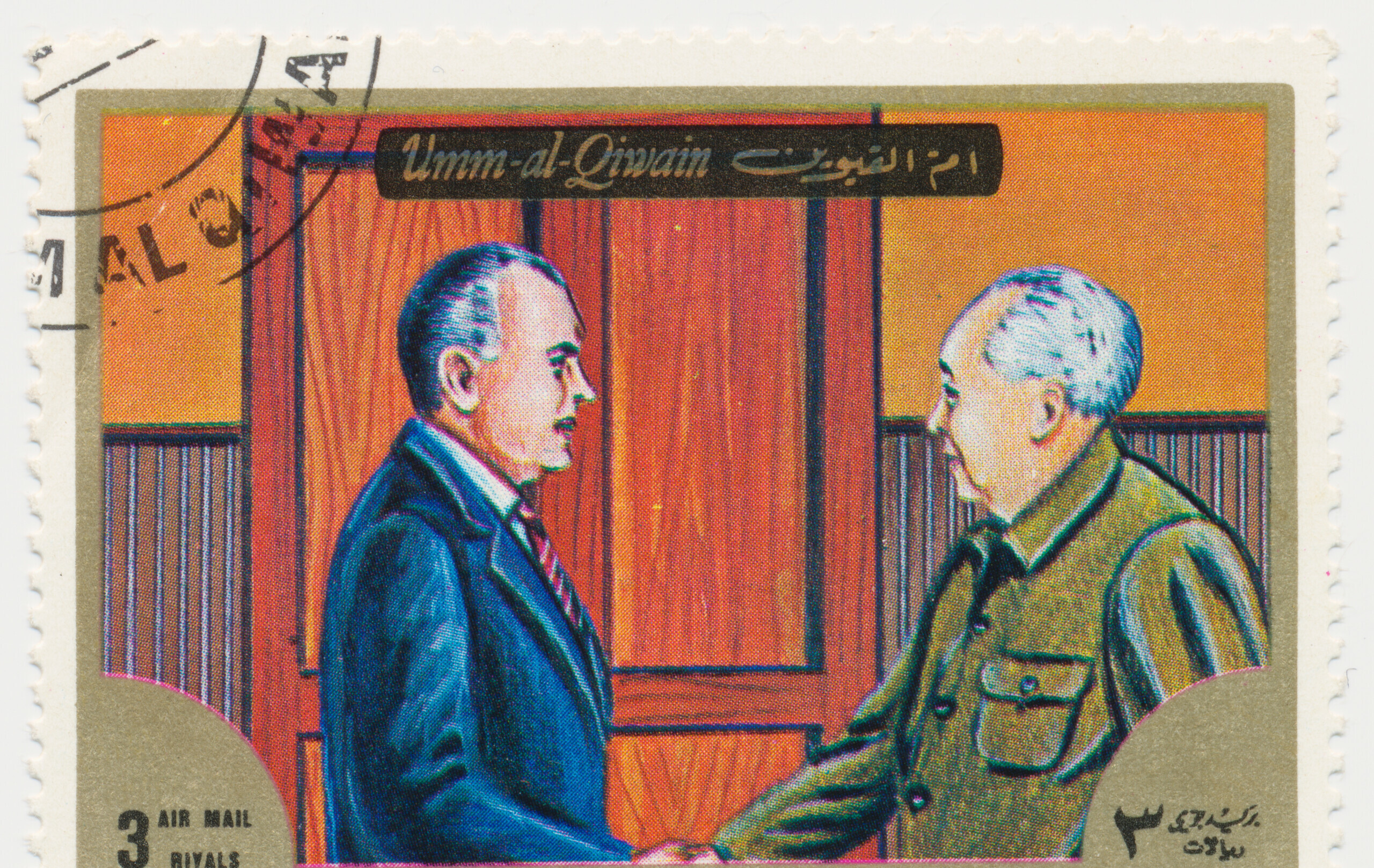Conventional histories usually mark the beginning of the Cold War to the year 1946 or 1947. But in truth the Cold War began during the Second World War. Great Britain welcomed Josef Stalin’s Soviet Union as an ally against Germany after Hitler broke the Nazi-Soviet Pact in June 1941 by launching Operation Barbarossa.
Josef Stalin was never the heroic wartime ally that Churchill and FDR portrayed him to be to their publics during the war.
The United States, which was providing aid to Great Britain even before we entered the war, also extended assistance to Stalin, and after Pearl Harbor the wartime alliance of Britain, the United States, and Soviet Russia was forged. During the war, the “Big Three” leaders of those countries (Churchill, FDR and Stalin) met to determine wartime strategy and to establish the postwar order. Yet during that whole time period, Stalin was waging Cold War against those same wartime allies.
In his book The Struggle for the World, James Burnham wrote that the Cold War (he called it the “Third World War”) began in April 1944 with the mutiny of communists in the Greek Navy at Alexandria, against Britain’s Mediterranean Command. Around that same time in other war-torn countries (China, Yugoslavia), communist resistance forces backed by the Soviet Union turned against their wartime compatriots backed by Britain and the United States. Those clashes, Burnham explained, were not part of the still ongoing Second World War; instead, they were manifestations of a different conflict where the wartime allies of the Second World War found themselves on opposite sides.
Former President Richard Nixon understood this. In his 1980 book The Real War, Nixon wrote that “World War III began before World War II ended.” “Even as Allied armies battled Nazi forces to the death in Europe,” Nixon explained, “Stalin had his eye clearly fixed on his postwar objectives.” Even as courageous Polish soldiers fought with British and American forces against the Wehrmacht in the west, Stalin paused the Soviet offensive in the east to allow German forces to crush the Warsaw uprising.
And now in a new history of the Anglo-American late summer 1944 airborne/infantry offensive known as Operation Market Garden, British journalist Robert Verkaik reveals that Stalin’s London-based spies provided secret intelligence information to the Germans that enabled German forces to effectively counter the assault and thereby extend the war in the west by many months. The book is titled The Traitor of Arnhem, and its principal thesis is that Soviet spy Anthony Blunt — one of the so-called “Cambridge Five” traitors in Britain’s wartime MI5 and MI6 — provided enough information about Market Garden’s planned assault to enable the Germans to frustrate Gen. Montgomery’s strategy to end the war in the west by Christmas.
The failure of Market Garden led to Hitler’s gamble known as the Battle of the Bulge, which was the costliest battle for the Americans in the Second World War. The failure also meant that the Anglo-American armies were held up in the west while the Soviet steamroller “liberated” countries in Eastern and Central Europe. Stalin’s geopolitical vision led him to fight the Germans in the east with one hand while aiding the Germans against his “allies” in the west with his other hand. “The 11th-hour temporary reversal in fortune of the Western Allies at Arnhem, halting the Anglo-American inexorable march towards Berlin,” Verkaik writes, “played directly into the hands of the Russians.”
Even before the war in Europe began, the Soviets recruited and installed Anthony Blunt, Kim Philby, Guy Burgess, Donald Maclean, and John Cairncross in key positions in MI5, MI6, and the British Foreign Office. Simultaneously, Stalin’s intelligence apparatus infiltrated U.S. New Deal and later wartime agencies — sometimes at the highest levels — to conduct both espionage and act as agents of influence. And during the war, Stalin’s agents infiltrated the Manhattan Project to steal Anglo-American atomic secrets. “The Cold War had started,” Verkaik writes, “on the day Hitler invaded Russia, years before Winston Churchill was to give it a name.”
In his memoirs, Soviet spymaster Pavel Sudoplatov recalled that in 1939 when he became deputy director of the NKVD (forerunner of the KGB) Foreign Department, one of his main tasks was “to supervise the planting of illegals in … Europe and develop an agent network run by NKVD officers.” That agent network included double agents who couriered Blunt’s information to the Germans about Market Garden.
Josef Stalin was never the heroic wartime ally that Churchill and FDR portrayed him to be to their publics during the war. Churchill realized that in allying with Stalin he was making a deal with the Devil. Roosevelt was more naïve. He thought he could use his charming personality to persuade Stalin to join what we now call the “rules-based international order” instead of trying to overthrow it. Robert Nisbet accurately described FDR’s approach to Stalin as the “failed courtship.”
History does not repeat itself but it sometimes rhymes. The United States beginning in the early 1970s forged an alliance with China’s Communist Party leaders (including another Devil named Mao Zedong) to help win the Cold War against the Soviet Union. Successive American presidents believed that China’s communist leaders could be persuaded to join the rules-based international order instead of trying to supplant it. Those U.S. presidents were as naïve as FDR, and now we are in a new Cold War in which China has had decades within which to infiltrate our society and its institutions. Our new Cold War with China started before the old Cold War with the Soviet Union ended. Maybe history does repeat itself after all.
READ MORE from Francis P. Sempa:




















